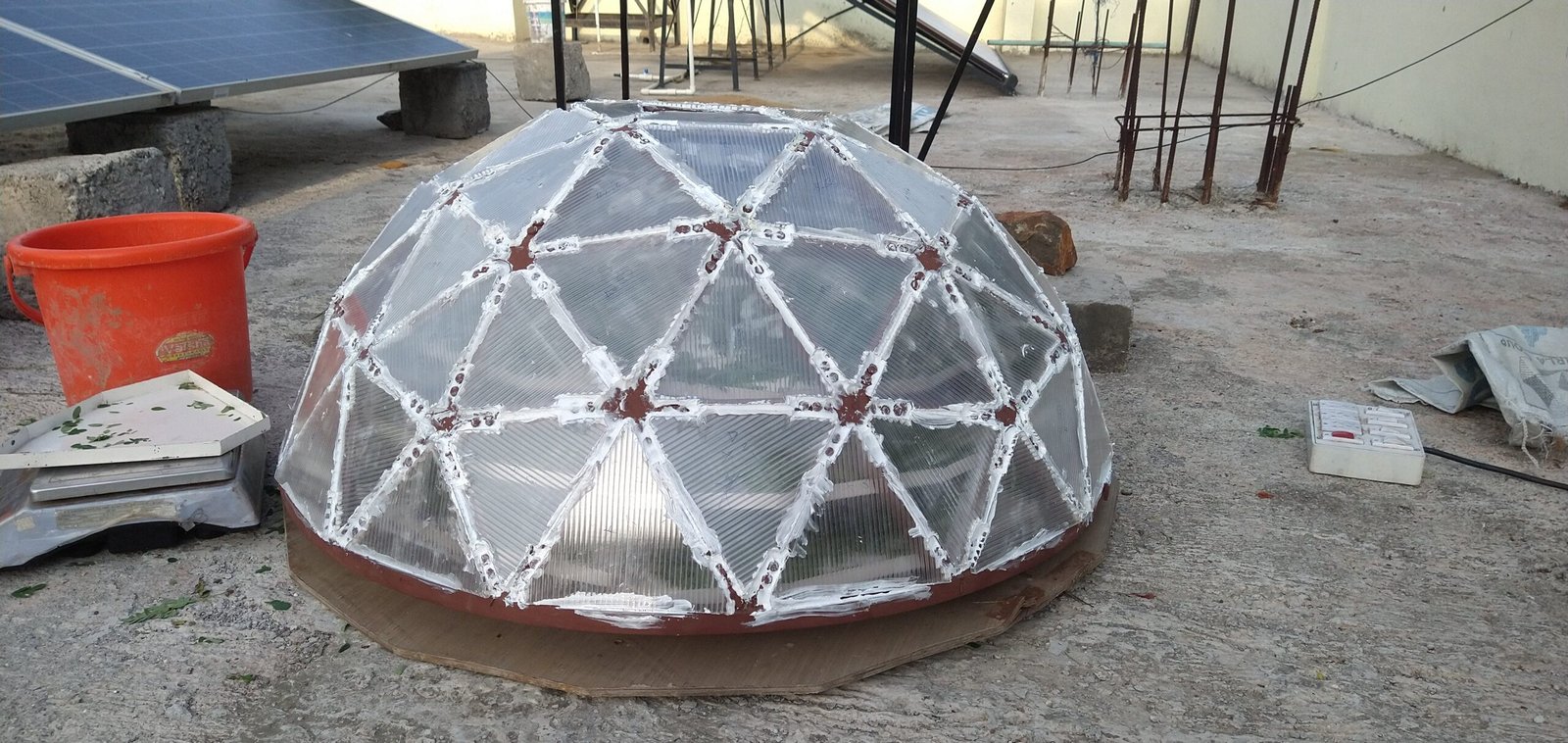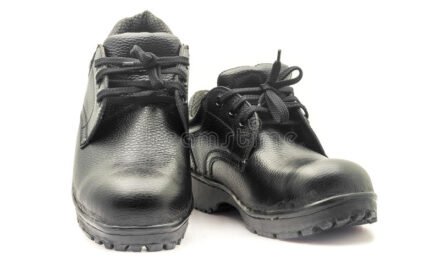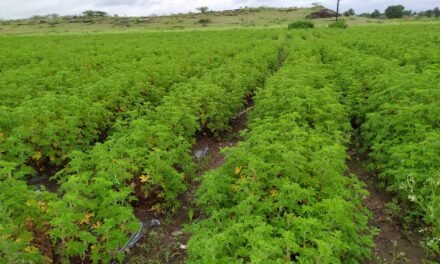BACKGROUND:
The dome dryer designed and developed at Vigyan Ashram is excellent for substrates where retention of aroma and colour is more important than the time required for drying. The dome dryer takes longer time for drying compared to a dryer such as the S4S dryer designed by IIT, Bombay with transparent walls because the solar radiation doesn’t fall directly on the substrate.
We decided to utilize the hemispherical shape of the present dome dryer which gives minimum surface area for a given volume and also maximum exposure to sunlight compared to any other shape and replace the heat absorbing metal walls with transparent multiwall polycarbonate sheet for direct exposure of sunlight to substrate. The multiwall polycarbonate sheet being hollow also acts as an insulator storing heat inside the dome.
CONSTRUCTION OF THE DOME:
Design:
The diameter of the dome was kept 600mm, same as the previous domes
For the design of the dome, https://geo-dome.co.uk/3v_tool.asp was referred. Based on the required diameter of the dome, this site provides details of the number of triangles required along with the length of each side of the triangle and the number of hubs needed for the construction of the dome. We decided to keep the frequency of the dome to 3 in order to have lower complexity for fabrication.
Fabrication:

For construction 3/4 inch L-angle was used, a smaller sized L-angle could also have been used but it was unavailable in Pabal.
For the hubs, 1mm thick sheet metal was used which was cut using plasma cutter.

Once the structure was ready 6mm multiwall polycarbonate sheet was cut into multiple triangular shapes using an angle grinder and glued to the structure. An attempt was made to cut the sheet using laser cutter but the heat generated during cutting burned the sheet to some extent making the sheet yellowish.

The polycarbonate sheet used was not flexible hence significant gaps were present between the sheet and the metallic structure. These gaps were later filled by silicon sealant.

TRIAL:

A trial was conducted on the polycarbonate dome between 30 June to 2 July using Moringa leaves as substrate. Metal dome was also loaded and placed near the polycarbonate dome for comparison. Following are the observations of the trial:
- The metal dome retained colour better than the polycarbonate dome as expected,
- No significant difference in aroma retention was observed in metal as well as polycarbonate dome,
- The polycarbonate dome seems to dry substrate at a faster rate than the metal dome,
- For verification of the above hypothesis another trial needs to be conducted with more number of LOD readings than the previous trial.





